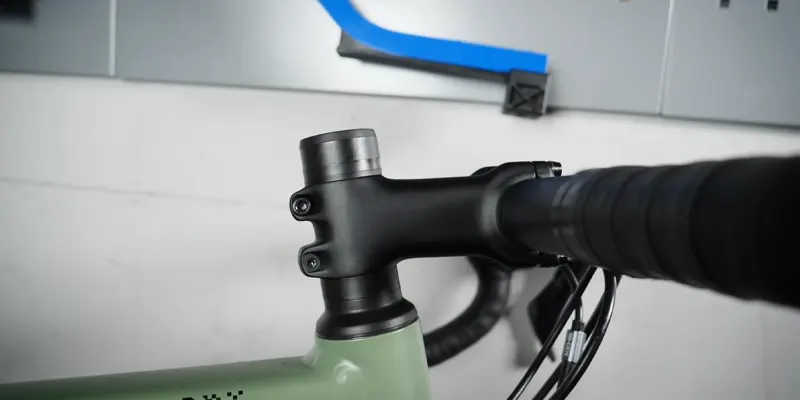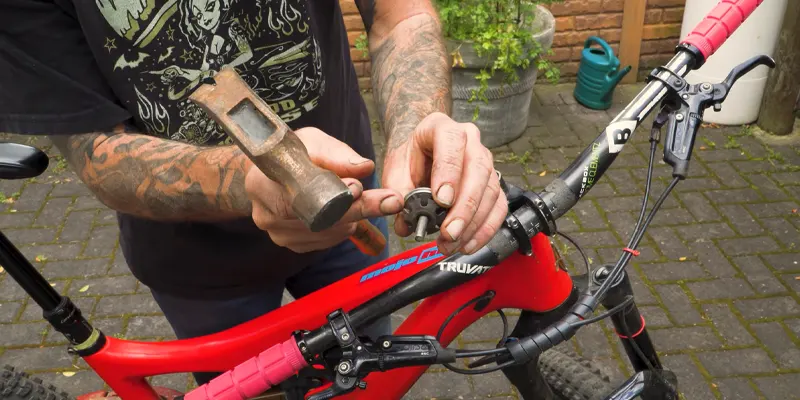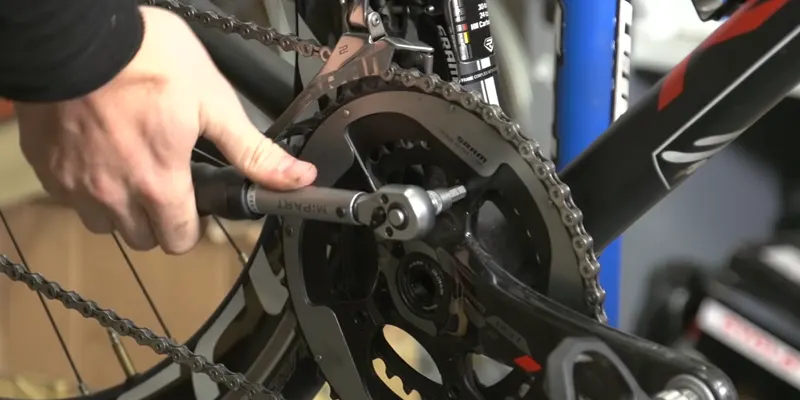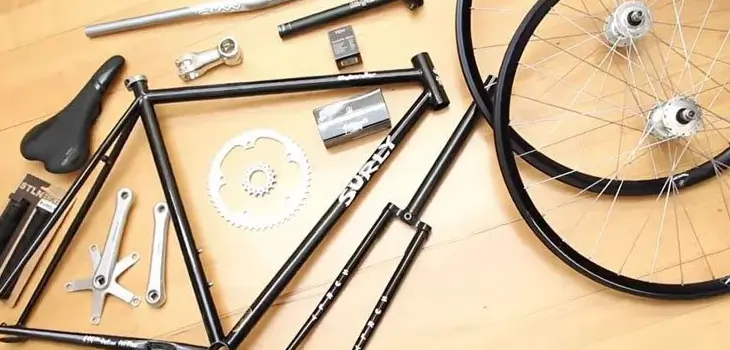How to Build a Fixie Bike? A Complete Guide In 13 Steps
[tcb-script async=”” src=”https://pagead2.googlesyndication.com/pagead/js/adsbygoogle.js?client=ca-pub-5064661158469285″ crossorigin=”anonymous”][/tcb-script][tcb-script] (adsbygoogle = window.adsbygoogle || []).push({});[/tcb-script]
Fixie bikes are affordable anyway. Want to lower the price even more? Take matters into your own hands and start building them. Sounds exciting. Everything is customizable these days, even bikes.
But now comes the big question; How to build a fixie?
If you want to customize your fixie and learn a few things about its building process, you have arrived at the right place.
We can provide you a guide that is no less than exemplary. Without wasting any of your precious time, we present the most anticipated guide.
Let’s jump right into it!
Let’s Know How to Build a Fixie Bike in Details
We believe that we have been able to come up with the perfect guide for building a fixie. After all, we’ve put much time and effort into this.
Scroll right through to find out the instructions we have for you!
Step 1: Installing the Forks

At first, you will need to install the forks. You’ll need to work a lot with them. So, make sure that the installation is done properly. For this step, you will need to attach both the top cup and the bottom cup with the bracket in the front.
Attachment of the cups is done to ensure that the brackets are strictly positioned in the frame. When you attach the cups to the fore bracket, the forks will be attached.
At this stage, you have to make sure that the bearing cups are well lubricated.
Step 2: Attaching the Stem

Our second step is the attachment of the stem. The stem is another essential part of the bike. Hence, we advise you to take extra measures while doing this step.
Here, you have to put on the stem using some tools and with the help of some other segments of the bike. Our first step was the installation of the forks.
Now, on the top portion of the forks, you will observe two spacers. Along with these, you will have to place the stem.
You need to make sure that the additional stem in contact with the forks is visible.
Step 3: Cutting the fork
This is just the third step. But we’d like to let you know that all the steps are inter-related and should be performed in the right sequence.
Remember everything you have done with the forks so far?
At first, you installed it. And then, at the second step, you deliberately kept the extra stem on the fork.
Now, you have to mark that extra stem. You can use whatever you prefer for the marking. Then, you need to remove the stem.
Put the fork in a locking jaw plier and pad them.
Step 4: Setting the Star Nut
Forks can often tend to be rigid. For this reason, star nuts are essential for every worker while working with forks. You can use a star nut setter to do this step. If you don’t have one, you will have to use the good old DIY methods.

A screwdriver is a good alternative to a star nut setter.
At this step, you need to make sure the additional fork has been cut off properly. Then, start working for the placement of the star nut into the tubing of the fork.
If you are a beginner, it is advisable to use a setter instead of alternatives.
Step 5: Fitting the Stem
In this step, you will have to fit the stem once and for all. We’ve already mentioned how important stems are. So, follow this step carefully.
Put the stem back at its original position. Then, observe whether the fork lines up with the top portion of the stem or not. If not, make sure it does.
If additional spacers are required to ensure it, use them.
For the finishing touch, secure the bolts.
At first, secure the bolts positioned on the sides. After securing those, secure the top positioned ones that bolt the screw nut.
Step 6: Installing Bottom Bracket and Crank Arms
You have already worked with the top bracket. Now, it’s time to install the bracket located at the bottom. Lubricate the bracket and the case of the machine. Then, set it in the chamber and secure it.

You should use a ratchet specifically designed for this purpose. We advise you to go for brackets that are bolted. This will prove to be less of a hassle.
For the crank arms, place them onto the sprocket, and then lubricate the screws separately. Secure the screws accordingly.
For this part, you will require a wrench as well as a ratchet.
Step 7: Setting Up the Chainring
The chainring, often known as the sprocket, is a very essential part of a bike. Since we’re discussing the process of building a fixie bike, chainring automatically comes up.
Chainrings come in different sizes.
Make sure you pick the right size for your bike. It’s better to get different sizes so that you can have options.
Another thing you would want to ensure is that the chainrings are properly threaded. For setting up the chainring, you should use a thread locker that contains a lockring.
Position the chainring properly and then secure it with the lockring.
Step 8: Installing Handlebars
Before installing the fixie handlebars, make sure you trim them down to the right shape. You can use a regular saw to do so. For the installation process,
- Put the handlebars in the middle portion of the stem. Then,
- Secure it by tightening it. After doing so,
- Cover the handlebars using insulation tape made of rubber or cork.
When you are covering the handlebars, do it at a slow pace. Do not overdo it. Make sure that there is no extra wrap after the covering is done.
Step 9: Setting the Rear Wheel
A bike is nothing without wheels. So, pay close attention to this step. At first, place the chainring tightly. It should point towards a single direction and the tool should hold onto the chainring.
Here, you should use a high-quality chain to go through the front portion of the rear wheel. After that, place the lock on the rear wheel.
Here, it should point in the opposite direction. You can use a lock ring to tighten it. Secure the rear wheel in its position.
Step 10: Installing Wheels
Brace yourself for the most essential part of the whole process. The installation of wheels is not just imperative, but also equally difficult. Place tape along the wheel reaching up to both the valve holes.
Secure them properly and evenly. If you are using new wheels, it will be quite a job to install them. We suggest you stretch the new wheels before installation.
Just like you’d change your regular tire, install the wheels for this fixie bike. Almost similar tools and techniques are required to do so.
This is a customary step of the bike building process, so you will find much assistance if you need it.
Step 11: Putting Up the Chain
At first, you have to apply a chain tool to take the chain come aside. It should also be able to be put back together when correctly fit.
This is done to fit the chain over the chainring and rear wheel. Measure the length of the chain and compare it with the rear wheel.
Here, the real wheel should be secured at the center of the back bracket. Now, take a chain tool to remove the pin from the chain.
It will remove the redundant links and click the links together to locate the pin properly.
Step 12: Installing Pedals and Clips
Just like chainrings, pedals come in various ranges. There are different kinds of pedals that have different functions. When you will be installing the pedals, make sure that you observe the proper direction on the pedal.
Lubricate the threads and then secure the pedals.
With clips, you need to consider durability. Clips made of metal are durable and resistant. So, you should pick those.
Step 13: Launching the Brakes
Finally, we have arrived at the final step of the process. Our thirteenth and final step is the launching of brakes. Although brakes are imperative in a vehicle, that is not the case with fixie bikes.
However, you can still launch brakes within these bikes for maintaining safety. Having front and rear brakes will do the job.
- Locate an ideal spot for the placement of the brake lever. It must be capable of being effortlessly reached. After locating the spot,
- Place the brake lever there. Finally,
- Secure it by tightening it.
After completing all the steps we have mentioned, you will have to perform yet another activity. You will have to finish up the building of the fixie.
At this stage, all you have to do is inspect your work and make necessary changes.
Although this is not a formal step of the process, it is crucial.
Build Your Fixie!
Now that you are quite a know-it-all regarding fixies, it is time for you to build your own bike.
In our guide, we have included detailed information to teach you how to build a fixie. Follow it and easily build one of your own!
